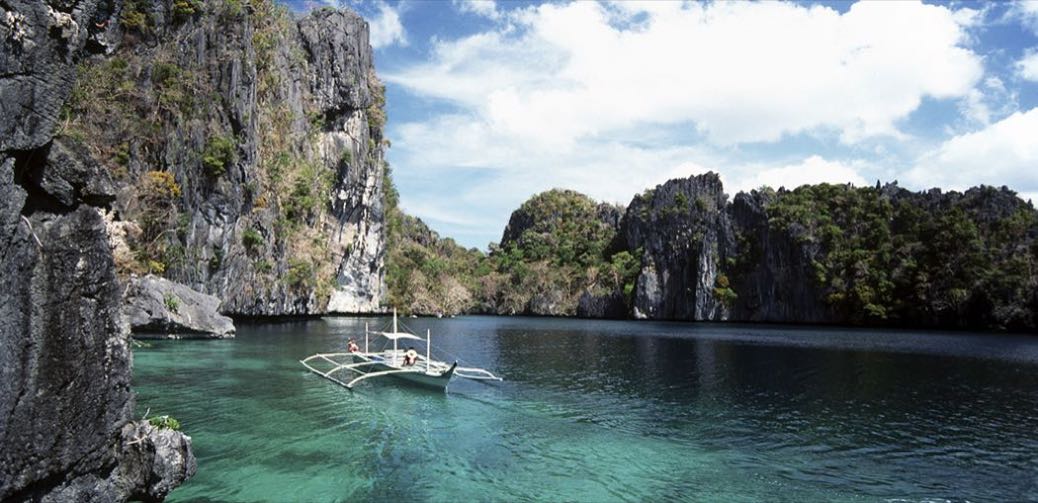Nothing can be more improving to a young naturalist than a journey in a distant country.’ For Charles Darwin, travel was imperative to his life’s work. Islands in particular, make good places of pilgrimage if you want to explore the natural world – some of the world’s most remarkable wildlife, marine life, and plant life is found in island habitats. Places like the Galapagos Islands are rightly famous for their zoological wonders, so Audley specialists have decided to highlight islands that are perhaps a little less well-known but intriguing in their own way.
1. Langkawi, Malaysia
Beyond Langkawi’s perimeter of white sand beaches, a tangle of dense jungle and tropical rainforest hums with life. Colugos – flying lemurs – glide from tree to tree. Great hornbill birds, identifiable by the protruding yellow and black casques on their bills, soar above the canopy and distribute the seeds from their frugivore diet, making them crucial to the rainforest’s ecosystem. In the understorey’s penumbra, strangler figs smother the trunks of existing trees and use them to climb toward the light. Keep your ears pricked as twilight descends: the island’s cricket population chirps away merrily for most of the day, suddenly stops in perfect synchrony as soon as the sun sets.
You don’t necessarily need to venture deep into this island’s interior to discover its bird and plant life: it’s all around you. The Datai resort, set in the rainforest, even has a resident naturalist who leads nature walks into the property’s primary rainforest.
2. Miniloc & Shimizo islands, The Philippines
Miniloc and Shimizo islands in the Bacuit Archipelago are celebrated for their marine life. Some of the best diving and snorkeling sites lie close to the El Nido Miniloc Island Resort, along the coral ridge that stretches between Miniloc and Shimizo islands. The current that runs between the aisles means that all food is brought directly to the coral ridge’s residents, so they thrive. On a typical dive or snorkel, you can expect to see a school of yellowfin snapper, Spanish mackerel, green or hawksbill turtles, and nudibranchs (multihued gastropod molluscs). Then there is the islands’ population of monitor lizards, who seem to grow larger than others of their kind – they are only slightly smaller than Indonesia’s komodo dragons. You may even spot them swimming – an unusual behavior for lizards – but try to stay a good ten meters or so away: they are fast-moving creatures, and their bite is worse than their bark.
3. Kangaroo Island, Australia
Kangaroo Island is a concentrated version of Australia’s wildlife in a secluded, unspoiled wilderness off the coast of Adelaide. A patchwork of farmland and red dirt roads in the interior gives way to eucalyptus forests and a rugged coastline with unusual rock formations and wide, sandy bays. It’s home to many endemic species, but perhaps its most special feature is the inquisitiveness of its wildlife due to a lack of natural predators. A little way off main roads, doe kangaroos laze under trees nursing their joeys, while at the aptly named Seal Bay certain tours allow you to walk among the seal colonies themselves, stepping over pups as they lie across the beach’s wooden boardwalk. You’re extremely likely to come across koalas, wallabies, echidna, possums, goannas, bandicoots, and platypus, as well as an array of birdlife, including sub-species such as the glossy-black cockatoo.
4. Yakushima, Japan
Yakushima is an island that is like no other part of the Japanese archipelago. Compared to the densely populated mainland, Yakushima is the land that time forgot: the entire island is a sea of green, a primeval temperate rainforest with soaring vegetation and a bamboo grassland at its highest points. It’s carpeted in ancient Japanese cedars, the oldest of which is 2,300 years old. Now a heavily protected area, the island is the largest nesting ground for the endangered loggerhead sea turtle in the North Pacific (you can only access their beaches with a guide). It is also home to some species exclusive to Yakushima – the Yakushima macaque and a type of sika deer, the yakushika. If you’re heading to Kyushu, you can reach Yakushima easily by high-speed boat from Kagoshima.
5. Mafia Island, Tanzania
Mafia Island is a marine reserve covered in baobab trees, but it’s worth looking to the skies and the sea to discover its wildlife. From Pole Pole Bungalows, you can take a short trip to Chole, a smaller island, where a local guide will show you fruit bat colonies that roost in huge fig trees. During daylight hours, while hanging upside down from the branches, they resemble giant fruits. In the evenings on Mafia, keep an eye out for the sight of whole colonies of bats flying in a huge cloud as they come to feed on Mafia. Mafia’s mangroves are also worth exploring: seahorses flourish in their shallow lagoons and look out for decorated coral crabs crawling over the sand at low tide.
Copyright Luxury Travel Diary 2014 - 2025. Duplication outside of luxurytraveldiary.com is forbidden.
Note: Benefits & upgrades subject to availability. Benefits offered correct at the time of writing. Terms & conditions apply. Enquire for more information. Posts may be sponsored by the proprietor or brand being appraised. All opinions remain our own & are in no way influenced.















